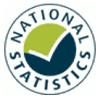Learner outcome measures for further education, work-based learning and adult community learning

The Welsh Government have produced two reports:
The first is an annual report which presents learner outcomes data by level of study, type of learning aim, sector/subject area and learner characteristics throughout Wales.
The second is an annual report which presents data by institution and pay expenditure categories throughout Wales.

Learner outcome measures for work-based learning (WBL)
Release date: 25 May 2017
- The overall WBL apprenticeship framework success rate was 82 per cent.
- 57 per cent of learners who left Work Ready programmes in 2015/16 had a positive progression (i.e. to employment (including self-employment or voluntary work) or learning at a higher level).
Learner outcome measures for further education (FE) and adult community learning (ACL)
Release date: 02 February 2017
Key points
- In 2015/16, the overall learning activity success rate for FE was 86 per cent.
- The success rate for main qualifications in FE was 83 per cent in 2015/16.
- The FE learning activity completion rate increased by one percentage point from 2014/15 to 92 per cent whereas the FE learning activity attainment rate remained the same at 94 per cent.
- The overall learning activity success rate for ACL was 85 per cent.
Learner outcome reports
Learner Outcomes Reports are summaries of the learner success rates achieved by each provider in Wales. The reports show colour-coded information on success rates – the percentage of all qualifications that are achieved by learners – and learner progressions into employment or further learning (for WBL providers).
Staff at further education institutions
Statistics were collected from the institutions by the Department for Education and Skills via the Finance Record. Previous releases were sourced from the Staff Individualised Record.
Key points
- During 2015/16, staff numbers, directly employed by Further Education (FE) institutions in Wales, amounted to 7,755 full time equivalents (FTEs).
- The overall number of direct staff FTEs fell by 8.4 per cent between 2014/15 and 2015/16.
- Year on year changes in staff FTE numbers varied across FE institutions, with all experiencing a decrease in staff FTE numbers relative to 2014/15.











Responses